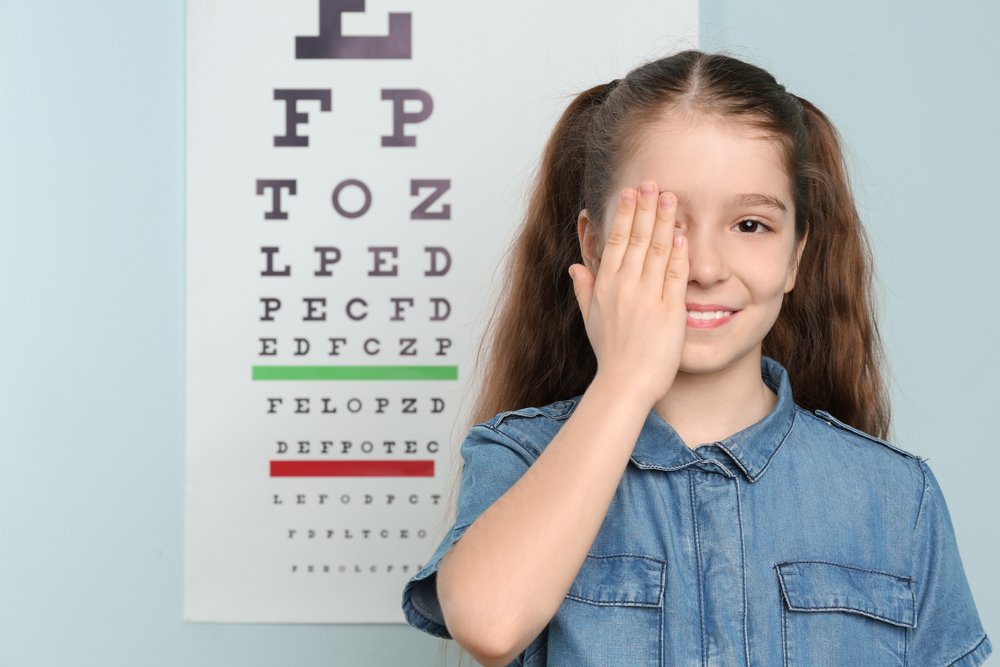 Did you know that 1 in 4 children wear glasses or contact lenses? These corrective lenses help students see the world around them more clearly and help them perform better at school. However, many students who need optical correction may not know it.
Did you know that 1 in 4 children wear glasses or contact lenses? These corrective lenses help students see the world around them more clearly and help them perform better at school. However, many students who need optical correction may not know it.
One of the ways Pennsylvania aids families in their vision health is with school vision screenings. These screenings help identify potential vision problems in students and make sure children who need a full medical eye exam are referred for one. Dr. David Silbert has been a strong voice in the need for screenings for children through his work with the Pennsylvania Academy of Ophthalmology (Act 112).
But what happens when a child fails an eye screening at school?
At Conestoga Eye, our team wants to ensure that every child receives the best possible eye care. Between medical eye exams, tailored treatment plans, and a range of corrective lens options, we are dedicated to helping students succeed. If your child has recently experienced a failed eye screening, don't hesitate to schedule an appointment with us today.
Request An Appointment
Understanding the steps to take after a failed eye screening can empower parents to act promptly, ensuring their child receives the care they need for optimal vision.
Understanding School Eye Screenings
Eye Exams VS Eye Screenings
Eye exams and school vision screenings serve distinct purposes in assessing a child's visual health. A pediatric medical eye exam is a detailed evaluation performed by an eye care professional, focusing on various aspects of vision and eye health. This exam tests not only refractive errors but also evaluates overall eye health, visual skills, and potential eye diseases. These exams include dilation of the eyes.
In contrast, school vision screenings are basic assessments meant to quickly identify noticeable vision problems, normally through a photo screener or reading of a vision chart. While screenings can indicate a need for further evaluation, it does not always mean a child needs glasses. Therefore, a child who fails a screening should follow up with a medical eye exam to ensure accurate diagnosis and appropriate treatment.
What it Means to Fail an Eye Screening
When a child 'fails' a school vision screening, it doesn't mean they get a bad mark on a report card or even that they definitely have a vision problem. It simply means that their screening results suggest a potential issue that requires further evaluation.
There are various reasons why a child may fail an eye screening, such as blurry vision, an eye-crossing, difficulty understanding the instructions or being unfamiliar with the testing environment. Additionally, some children may have temporary vision issues due to allergies or illness that can affect screening results. If your child fails a screening, it's important to take the necessary steps to rule out any undetected vision problems.
Steps to Take After a Failed Screening
If your child fails an eye screening, you can take the following steps to ensure their vision health is properly assessed and managed.
1. Schedule a Medical Eye Exam: Book an appointment at Conestoga Eye for a thorough evaluation of your child's vision and eye health. Be ready to share any family history of vision issues during the eye exam.
2. Monitor Vision and Behavior: Keep an eye on any changes in your child's behavior related to vision, such as squinting, rubbing their eyes, or avoiding reading and other visual tasks. If you do observe these behaviors, be sure to make a note of it for your child's eye doctor.
3. Communicate with Teachers: Inform your child's teachers about the failed screening and ask about any observed difficulties in the classroom. This communication can help them provide additional support if needed.
4. Follow Up as Needed: Depending on the outcome of the eye exam, be attentive to any recommendations for further assessments or corrective measures to ensure your child's optimal vision health.
Glasses, Contacts & Other Corrective Measures
When it comes to addressing vision issues, there are several corrective measures that can significantly improve a child's visual abilities. The most common solutions are prescription glasses and contact lenses (normally for children ages 12+), which can correct refractive errors such as nearsightedness, farsightedness, or astigmatism.
Glasses with polycarbonate lenses are the go-to choice for kids, as they are easy to use and require minimal maintenance.
Contacts require more responsibility in terms of care and hygiene.
In addition to traditional corrective lenses, children with specific vision problems, such as amblyopia (often referred to as 'lazy eye') or strabismus (crossed eyes), may need more tailored treatments. Amblyopia can sometimes be addressed with a combination of glasses wear, patching the stronger eye, or newer binocular treatment.
Take Action for Your Child's Vision Today!
Ensuring that your child receives timely eye care after a failed school screening is essential for their academic success and overall well-being. At Conestoga Eye, we are committed to providing medical eye exams and personalized treatment plans to support your child's vision.
Don't wait to take action—schedule an appointment with our team today for a thorough eye exam and discover the best solutions for your child's eye health!
